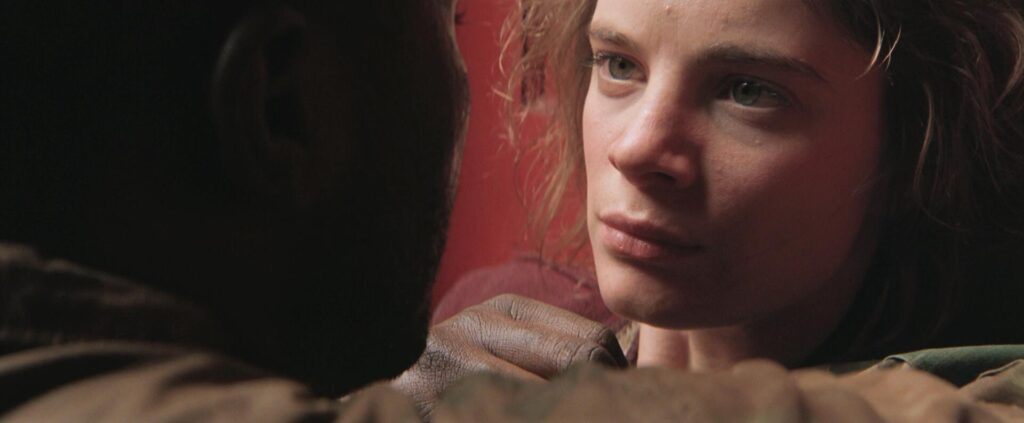
Robert H. Solo followed up his 1978 production of Invasion Of The Body Snatchers with the quasi-sequel/remake Body Snatchers (1993). Body Snatchers wasn’t the hit its more famous predecessors were, but it is nonetheless one of director Abel Ferrara’s most commercial movies. The shooting script Ferrara used was drastically rewritten by his frequent collaborator Nicholas St. John and features many of the elements that are present throughout the bulk of their work together.
Body Snatchers transposes the basic premise of the earlier films and Jack Finney’s novel onto an American Army base in Alabama. The narrative perspective is grounded in the character of a teenage girl named Marti (Gabrielle Anwar) who has recently moved to the base with her father Steve (Terry Kinney), her step-mother Carol (Meg Tilly) and her little brother Andy (Reilly Murphy). Steve has relocated his family to complete an evaluation of the base’s facilities used for storing deadly chemical weapons. As Steve and the base physician, Major Collins (Forest Whitaker), begin to suspect something strange is afoot, Marti begins a romantic connection with a helicopter pilot, Tim (Billy Wirth).
The narrative trajectory of Body Snatchers is essentially the same as earlier adaptations of the novel. The difference that comes from the changes that Abel Ferrara and Nicholas St. John have made is in the social and political commentaries of the piece. The hierarchy of the army’s chain of command is a much more dynamic and explicit social structure than that of a small town. This renders the disruptions caused by the pod-people and then the human survivors to be rendered much more dramatically.
The insular world of the military base also serves as an external reflection of the deterioration of Marti’s family; as the family comes apart so does the microcosmic world of the base. High ranking officers and parents are the first people replaced by pods, then come the children like Marti and her brother. Ferrara has consistently mirrored familial turmoil with external upheaval in his family portraits.
In the early nineties such portraits were typically of make shift social units within the context of organized crime. The protagonists’ struggle for a utopia within the family unit is typically undone by external forces that are symptomatic of the family unit itself in some way. In King Of New York (1990) Frank White’s criminal organization is disrupted by law enforcement that ostensibly exists only in reaction to the fundamental nature of the criminal element that unites Frank White’s “family”. In Body Snatchers Marti’s biological family is destroyed by an invasive extraterrestrial biological entity whose very nature requires a redefining of society’s norms and thusly of the human family unit itself.
The intertextuality between Ferrara’s film and the two earlier adaptations suggests that Body Snatchers is a reactionary work. This is more true in the case of Philip Kaufman’s version which focused exclusively on the romantic and sexual traumas caused by the invaders from outer space. Ferrara bypasses those concerns entirely with his laser like focus on familial dissonance. Ferrara’s films have always posited that home exists where family, makeshift or otherwise, is. Therefore a film about alien beings who have come to rob humanity of the earth must focus on the family social unit.
Stylistically speaking Body Snatchers continues in the vein of pulpy realism that defined Ferrara’s two preceding features. The wide screen compositions of Ferrara and cinematographer Bojan Bazelli are gorgeous and economical in how they tell the story. Often characters are obscured partially by an object in the shot, suggesting the hidden menace of the pod-people invaders. The use of cool dark colors, predominantly shades of blue, imbue the film not only with a sense of macabre menace but also renders flesh as appearing cold and damp; almost dead.
Body Snatchers sees Abel Ferrara at the height of his powers as a cinematic stylist. It’s not his most personal movie or innovative film, but it is highly entertaining and thought provoking enough to be engaging. The idiosyncratic nature of most of Ferrara’s works is so infamous that one forgets that Ferrara is a highly capable craftsman first and foremost, not just some mad eccentric.
